
| SAMADHA - TESTA GRIGIA STATION |

|
| The Lab | History | Real time dosimetry data | Real time Neutron Monitor data | Real time weather data | Photo Gallery | Back to SAMADHA home |
|
THE LONG HISTORY OF THE TESTA GRIGIA LABORATORY The history of the laboratory is closely linked to the history of the National Institute of Nuclear Physics (INFN) and to the epic beginning of research on cosmic rays and elementary particles physics.
|
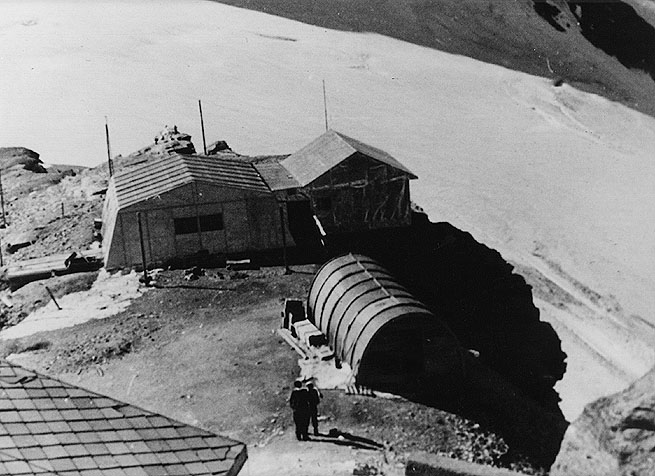
The laboratory in the '50s |
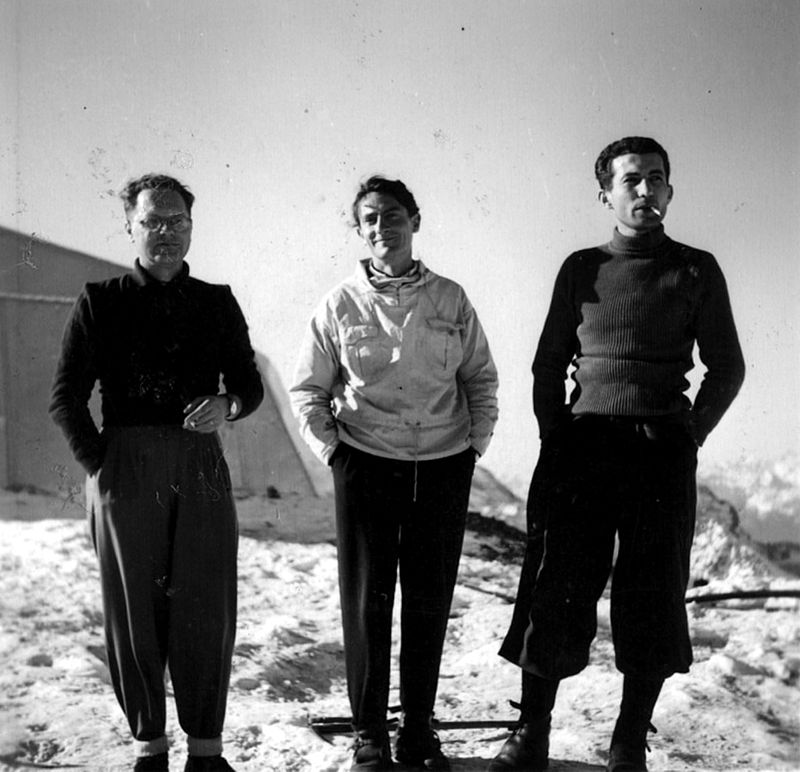 Edoardo Amaldi, Gilberto Bernardini and Ettore Pancini near the laboratory |
At the time, the large high-energy particle accelerators were not yet available, therefore cosmic rays, studied on high-altitude research stations, represented the only source of high-energy particles. The Testa Grigia hut was built by the architect Claudio Longo, using materials with low density and low atomic number, to shield the flow of cosmic rays as little as possible. Its construction was promoted by the Rome Group, led by Gilberto Bernardini, with the collaboration of Ettore Pancini, Marcello Conversi and Edoardo Amaldi. The laboratory soon became a meeting point for physicists from various universities (Turin, Rome, Milan) and the scientific collaborations established here led to the foundation, in 1951, of the INFN. "In those years, the high- mountain laboratories became meeting points for young physicists from many countries. Life in common in the mountain huts and the coordination of experiments planned by different groups were the elements that opened the way to the idea of wider and more ambitious collaborations" (Edoardo Amaldi) |
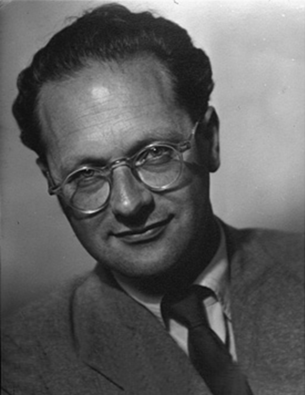 Edoardo Amaldi |
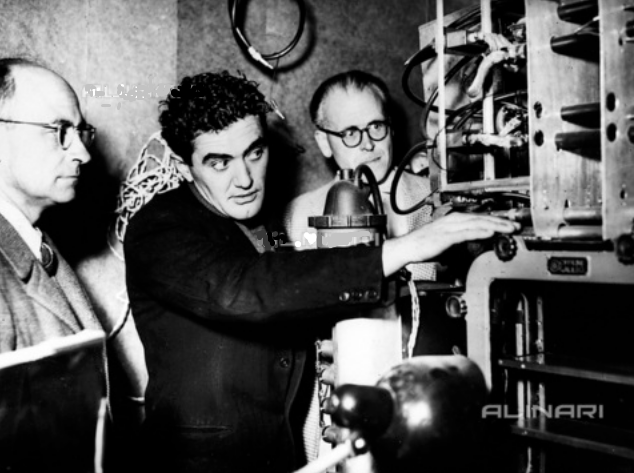 Enrico Fermi (left) and Emilio Segre (right) visiting the laboratory (1949) |
The laboratory, frequented by the "Via Panisperna boys", soon acquired international fame and made an important contribution to research on cosmic rays and high energy physics. The activity of the laboratory focused on the study of the nuclear interactions caused by cosmic rays in the atmosphere, using coincident Geiger Muller counters and a Wilson chamber, installed by the Milan group headed by Giorgio Salvini. These investigations led to the understanding of the nucleon-nucleus and photon-nucleus collision mechanisms at high energy. |
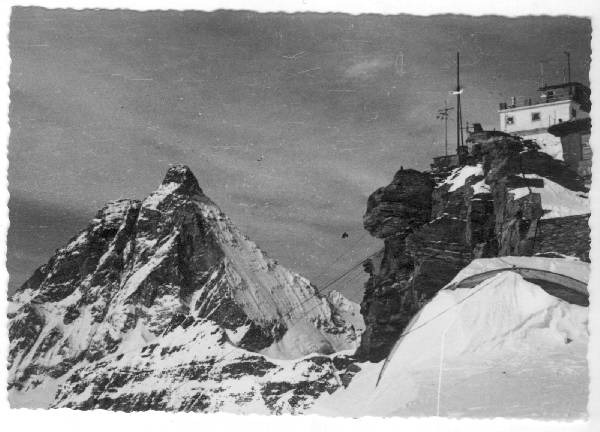 View on the Matterhorn from the laboratory |
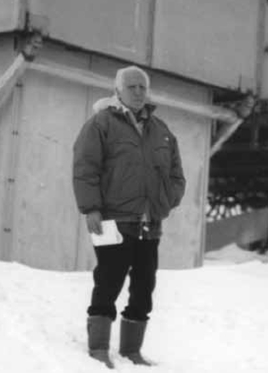 Carlo Castagnoli |
1965 - The rebirth of the laboratory
These studies continued until 1958. The activity was interrupted due to financial management difficulties until 1965, when the laboratory was put back into operation and expanded by Carlo Castagnoli (1924 -2005), pioneer in astro-particle physics studies, who went to Turin in 1961 to hold the chair of General Physics. The Testa Grigia laboratory at the time belonged to the Institute of Cosmo-Geophysics of the CNR. Subsequently, in 1999 it was acquired by the National Institute of Astrophysics (INAF). Today it belongs to CNR. |
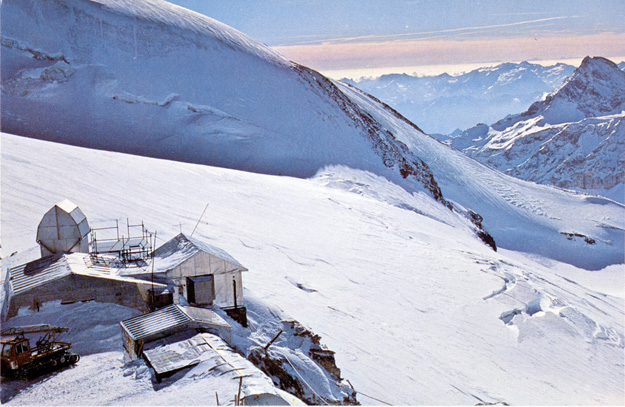 The laboratory in the '80s |
|
First measurements of Gamma-Ray Astronomy In the '70s and '80s, Gamma-Ray Astronomy was in its infancy, with the early attempts to detect gamma-rays from astrophysical sources. To "see" gamma-rays from the ground, detectors capture the "showers" of particles (EAS-Extended Air Showers) that they generate by interacting with the nuclei of the Earth's atmosphere. Gianni Navarra from the University of Turin and his collaborators installed one of the first devices in the laboratory to carry out these measurements, consisting of four "scintillation" detectors, placed in different rooms and working in time coincidence. |
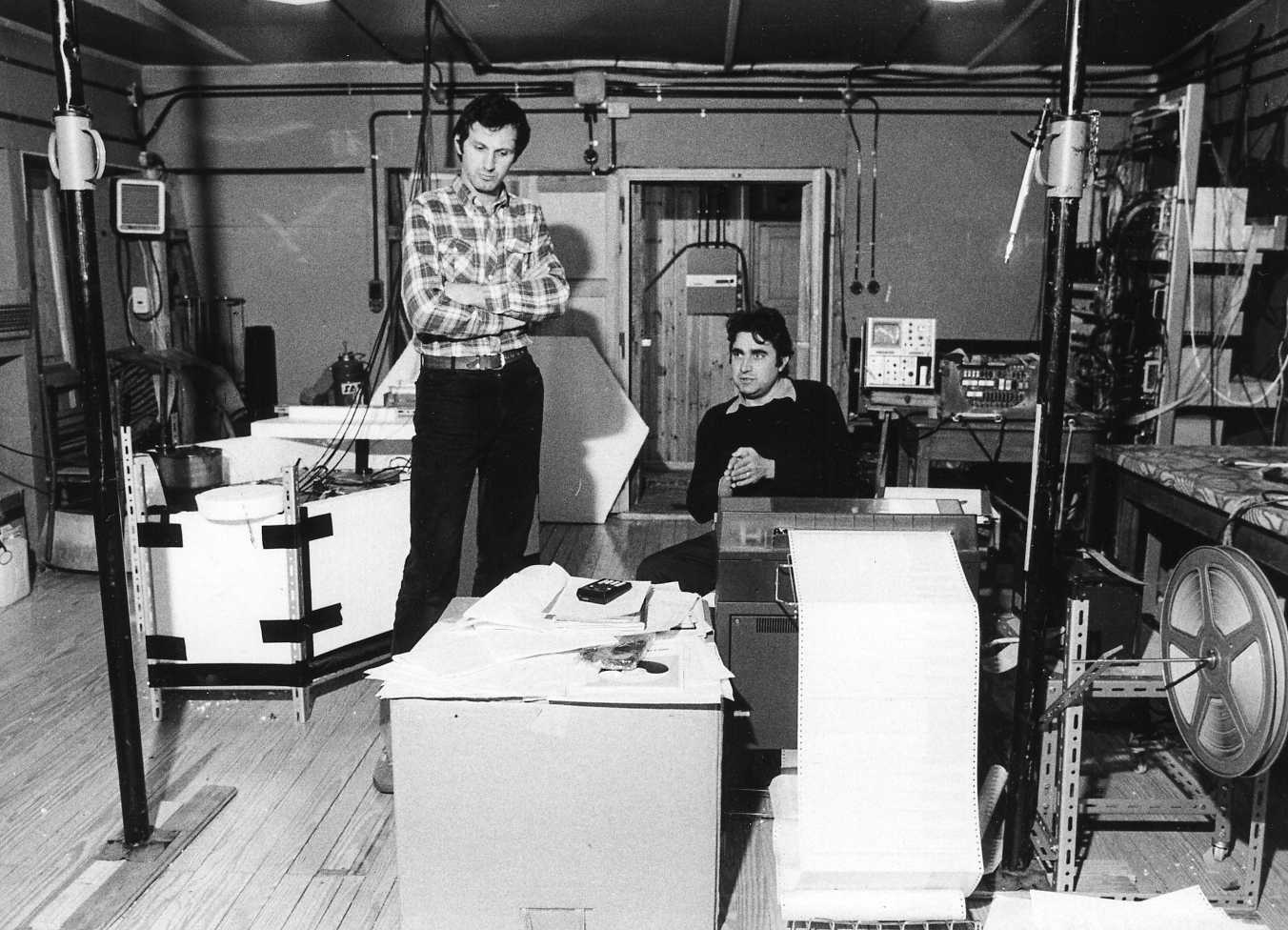 Gianni Navarra (right) and Carlo Morello (left) checking the data of the air shower array |
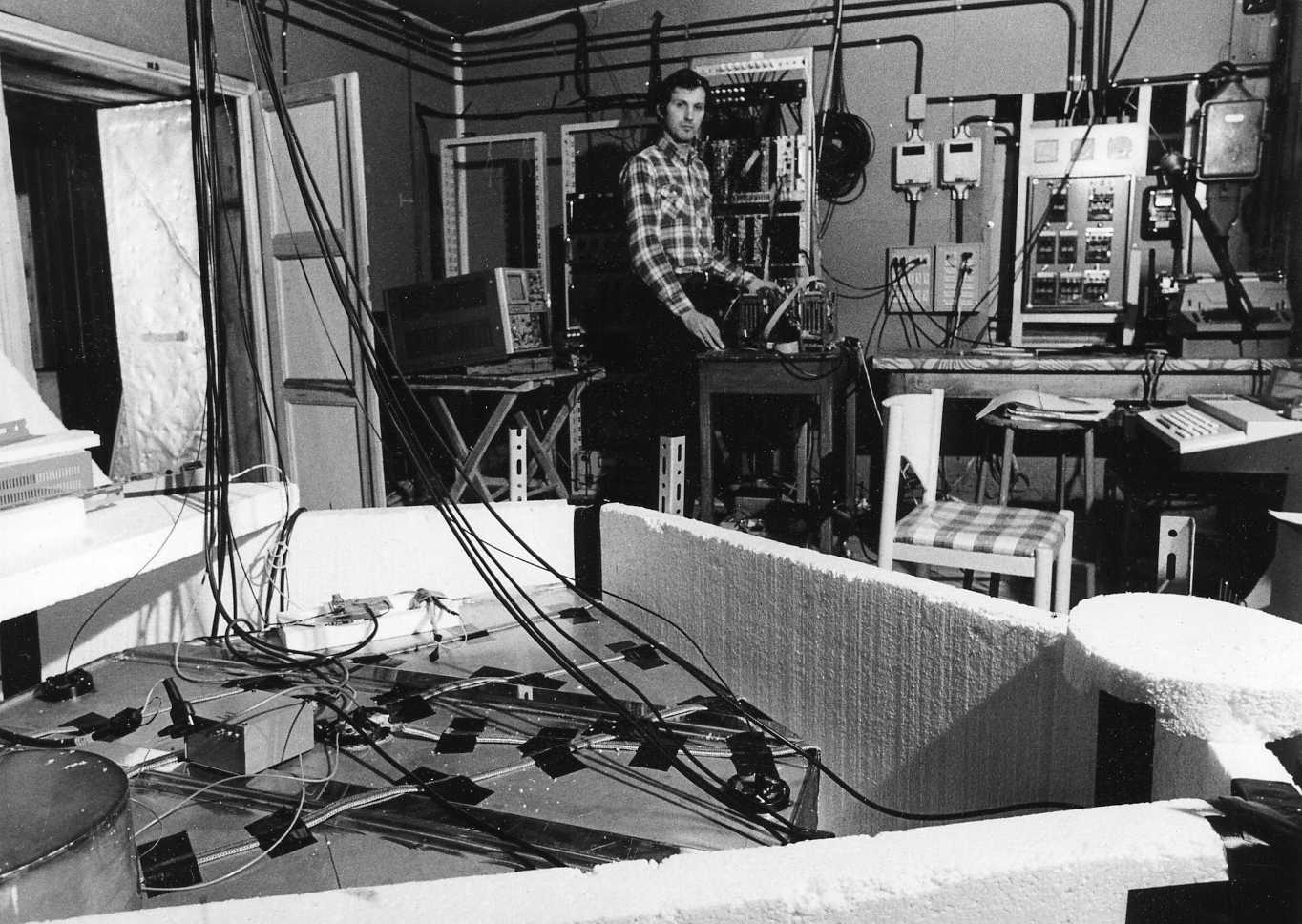 Carlo Morello with a scintillator detector in the foreground |
Gianni Navarra was also one of the first scientists to use the pioneering Cherenkov technique, based on the emission of radiation (Cherenkov radiation) from particles passing through a medium, as the atmosphere.
This radiation was detected by placing parabolic mirrors outside the laboratory, which at night captured the light emitted by the particles of the air showers and reflected by the snow of the glacier. |
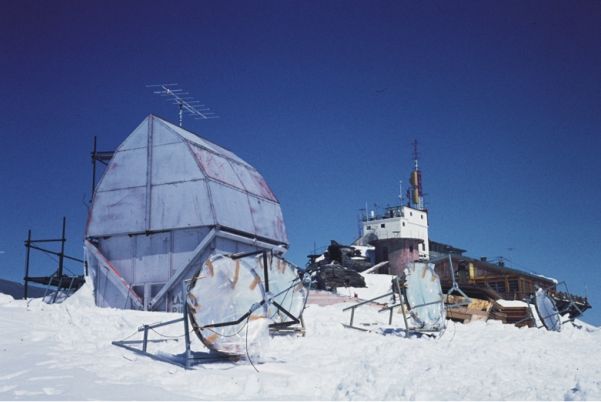 The parabolic mirrors used to detect the air shower Cherenkov light |
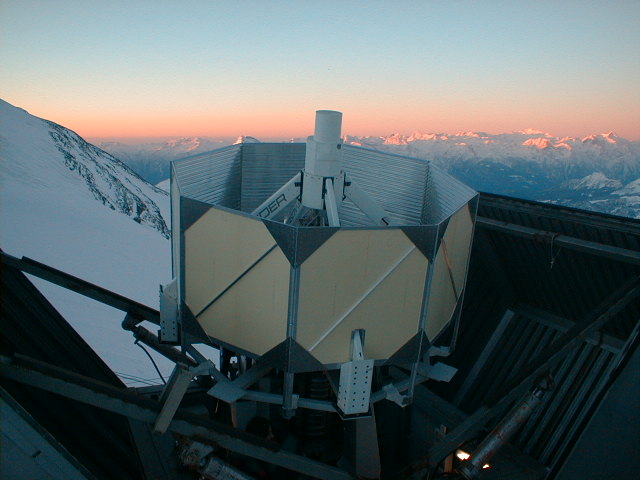 The MITO telescope |
Measurements of the Cosmic Microwave Background Radiation
In the early '70s a 1.5 m in diameter telescope was installed at the laboratory by Francesco Melchiorri and his group of the National Institute for Astrophysics (INAF) in Rome, to make the first observations of the Cosmic Microwave Background Radiation (CMBR), the "fossil radiation" emitted by the primordial Universe about 400000 years after the Big Bang. After almost 20 years the small precursor telescope was replaced with a 2.6 m one, named MITO (Millimetre & Infrared Testagrigia Observatory), that for several years studied the intensity and polarisation of CMB anisotropies at millimeter and submillimeter wavelengths. |
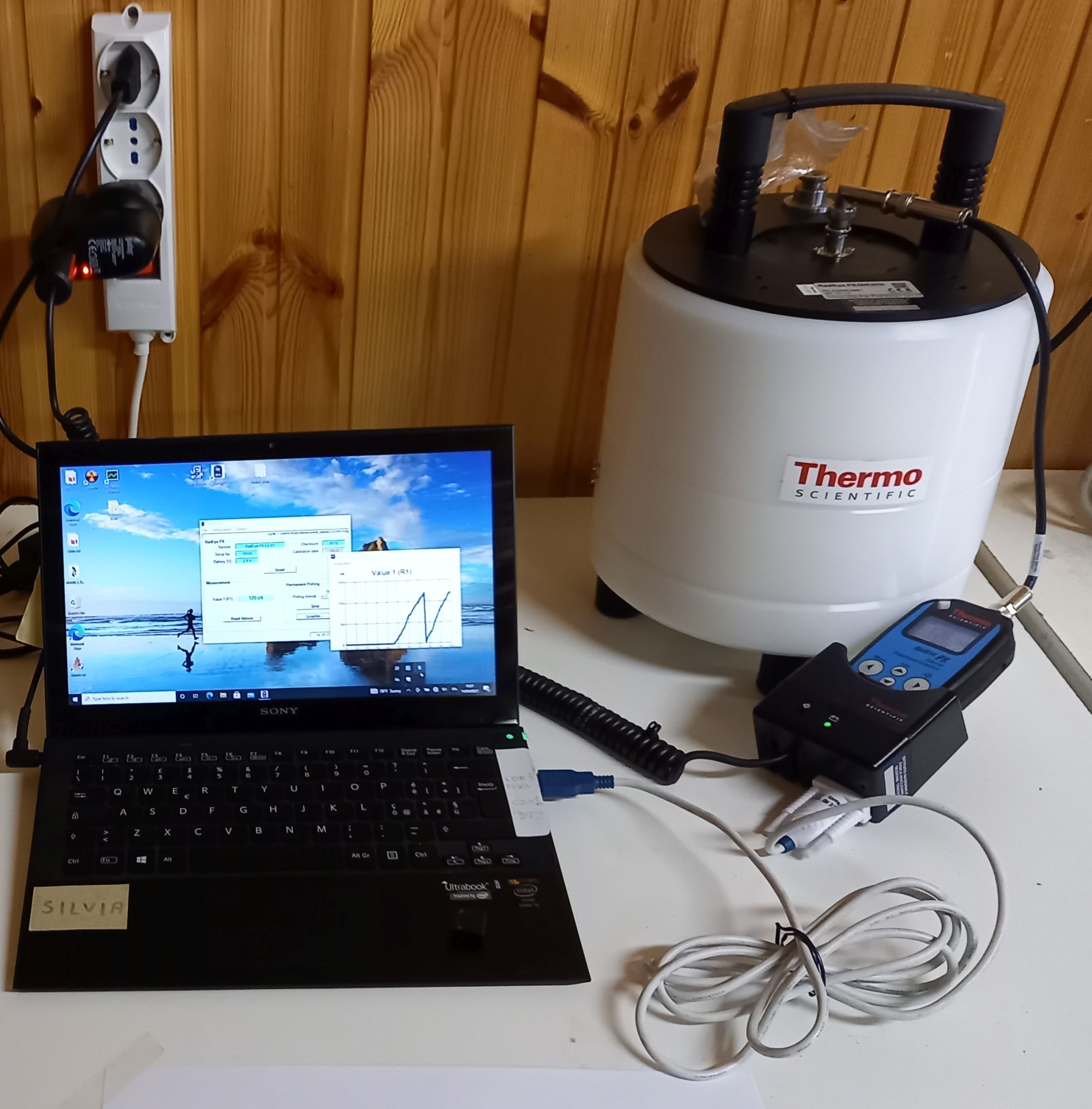 Neutron dose rate measurements with a Rem Counter |
TODAY - Cosmic ray monitoring and environmental radiation dosimetry In 2014 the IAPS-INAF SVIRCO group of Rome, in collaboration with the INFN-Torino Dosimetry group, installed a modular Neutron Monitor, that continuously monitors the variability of primary cosmic rays in relation to solar activity. Today the INFN-Torino group is performing environmental dose measurements, as well as tests and calibrations of dosimetric instruments to be used in the INFN SAMADHA project and PNRA CORDIAL project in Antarctica. At the end of 2021, in the framework of SAMADHA, the internet connection with the laboratory has been installed by INFN-Trieste and INFN-Torino. Since then, dosimetry data and meteo data are available in real time. |
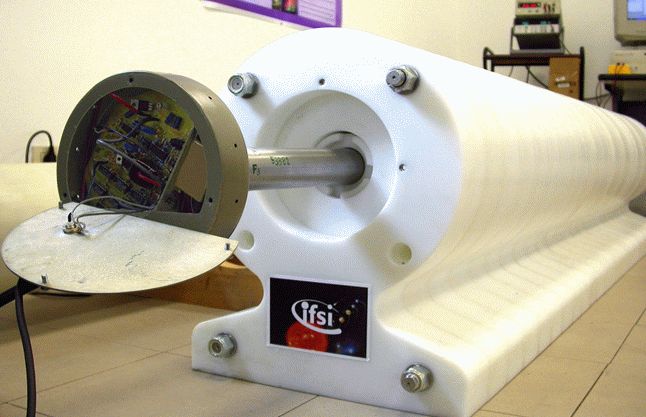 The modular Neutron Monitor |
|
Global Atmospheric Watch (GAW) Station Since 1969 the laboratory has housed a permanent atmospheric monitoring station, today managed by the Energy System Research Center - RSE SpA, and is one of the highest GAW stations in Europe for greenhouse gas monitoring, far from vegetation, urban settlements and industrial installations, in the free troposphere. The concentrations of greenhouse gases, as carbon dioxide (CO2), methane (CH4) and ground-level ozone (O3) are measured and regularly sent to the World Data Center for Greenhouse Gases, the main international database that collects the measurements of the worldwide monitoring network. In particular, CO2 data have been continuously recorded since 1993, constituting an important historical data base over the last 20 years. |
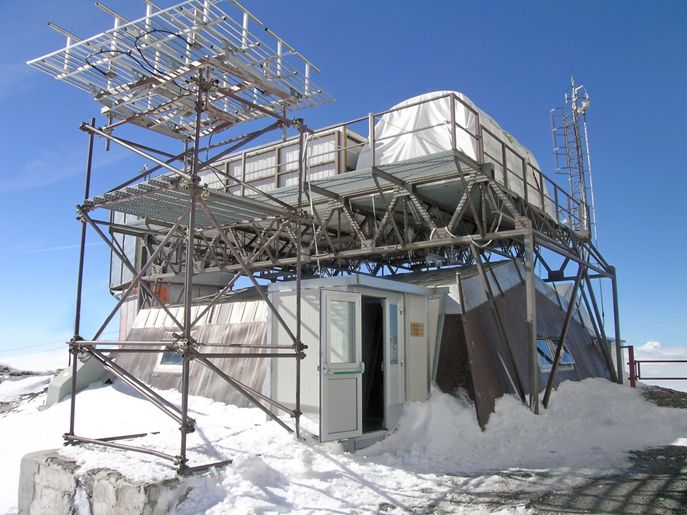 Atmospheric measurements on the roof of the laboratory |